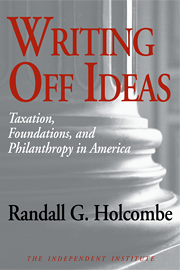TARP, the Troubled Asset Relief Program, is a year old now. On Sept. 19, 2008, former Treasury Secretary Henry Paulson announced the need for a $700 billion program to purchase toxic assets held by banks to prevent a financial meltdown, and after some modification Congress rapidly approved TARP on Oct. 3. Looking back after a year, was TARP necessary? Did it work?
The answers are No, and No.
To look at the first question, consider what TARP was designed to do. Secretary Paulson said interbank lending had dried up because banks had toxic assets (mortgage-backed securities) clogging their portfolios. Because nobody knew what they were worth, banks were uncertain of the financial security of other banks. This uncertainty caused a reluctance to lend and prompted the financial markets to lock up.
The solution, Paulson argued, was to approve TARP and use $700 billion to buy the toxic assets. Replacing the assets with Treasury securities would fortify bank balance sheets and interbank lending would resume.
It is easy to say the program wasn’t necessary, despite Paulson’s arguments, because the TARP money wasn’t used to buy toxic assets. TARP money was instead used to buy preferred stock in banks, shoring up their balance sheets by giving the federal government part ownership of the banks.
Nine of the largest banks were forced to issue stock to the Treasury, paid for with TARP money, even though several of the banks tried to opt out. Secretary Paulson said that if some of the big banks participated and others didn’t, it would identify their varying levels of weakness, which Paulson believed was undesirable.
Instead of buying up toxic assets, the TARP money was used to partially nationalize the banking industry. It was also used for a federal takeover of AIG (after it was initially rescued by the Fed) and the bailout of Chrysler and General Motors.
When the auto companies initially approached Secretary Paulson for a share of the money, he said it was only to be used for the purchase of toxic assets from financial institutions. But when Congress wouldn’t bail out the auto industry, Paulson changed his tune.
Was it necessary to appropriate $700 billion to buy toxic assets? In hindsight, we can see the answer is No, because the money wasn’t used that way. Are we any better off for having used it instead to partially nationalize financial institutions and manufacturing firms? All TARP did for Chrysler and GM was delay their bankruptcies for six months and buy the government its ownership interest.
As for the banks, it may be that some of them would have failed without the money, but that is not a bad thing. When firms take risks, they must balance the potential profits from success against the potential losses from failure, and the TARP support removes the last part of that balancing act. There may have been some dislocations in the short run from bank failures, but in the long run allowing them to go under preserves the incentive structure that fuels a market economy.
Banks are financial intermediaries that match up borrowers and lenders. When a bank goes under, it does not reduce the amount of money available to borrowers, or prevent savers from providing money that can be lent. Other financial intermediaries are available to borrowers and lenders to replace the activities that failed banks would have performed.
Ultimately, what TARP did was provide funds for the government to take an ownership interest in private firms. Nationalizing our financial and industrial firms is not in the public interest. The federal government now owns 80 percent of AIG and 61 percent of GM. TARP was not necessary. It didn’t work. And what it actually did was undesirable.













